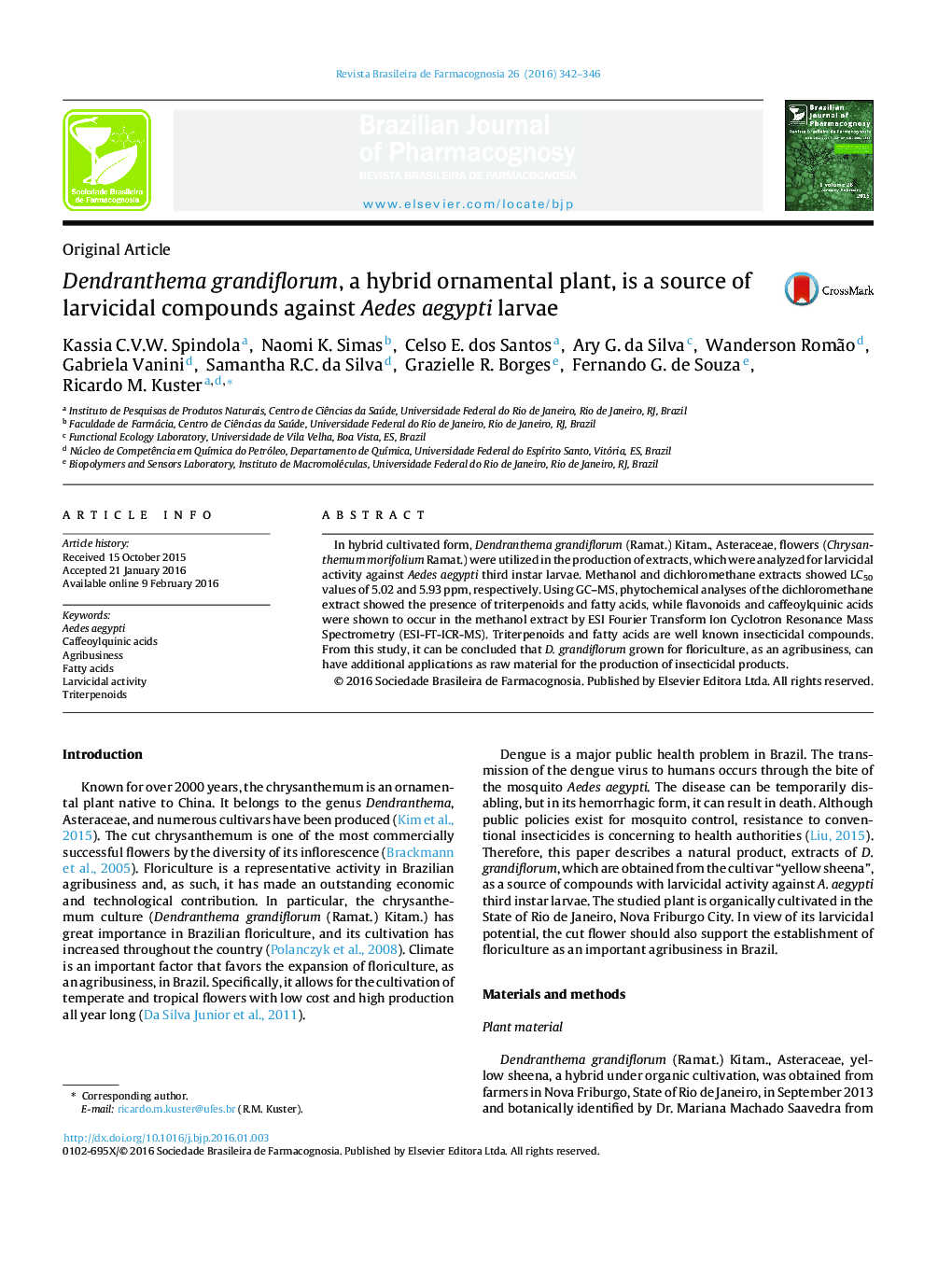| Article ID | Journal | Published Year | Pages | File Type |
|---|---|---|---|---|
| 2577601 | Revista Brasileira de Farmacognosia | 2016 | 5 Pages |
In hybrid cultivated form, Dendranthema grandiflorum (Ramat.) Kitam., Asteraceae, flowers (Chrysanthemum morifolium Ramat.) were utilized in the production of extracts, which were analyzed for larvicidal activity against Aedes aegypti third instar larvae. Methanol and dichloromethane extracts showed LC50 values of 5.02 and 5.93 ppm, respectively. Using GC–MS, phytochemical analyses of the dichloromethane extract showed the presence of triterpenoids and fatty acids, while flavonoids and caffeoylquinic acids were shown to occur in the methanol extract by ESI Fourier Transform Ion Cyclotron Resonance Mass Spectrometry (ESI-FT-ICR-MS). Triterpenoids and fatty acids are well known insecticidal compounds. From this study, it can be concluded that D. grandiflorum grown for floriculture, as an agribusiness, can have additional applications as raw material for the production of insecticidal products.
Graphical abstractCut flowers are source of larvicidal compounds against Aedes aegypti.Methanol and dichloromethane extracts (Dendranthema grandiflorum) containing triterpenes, fatty acids and phenolics were active at 5.02 and 5.93 ppm (LC50), respectively.Figure optionsDownload full-size imageDownload as PowerPoint slide
